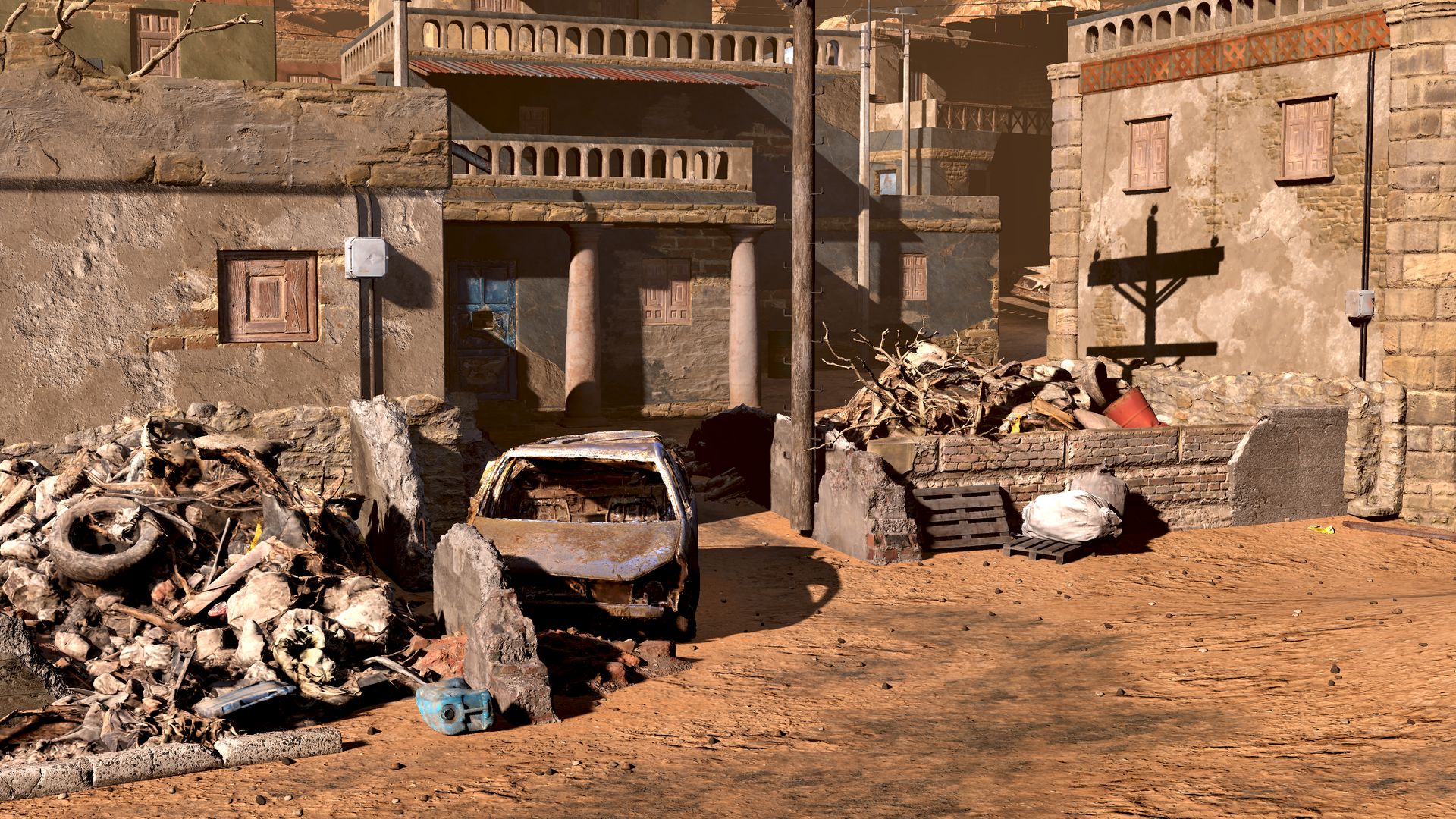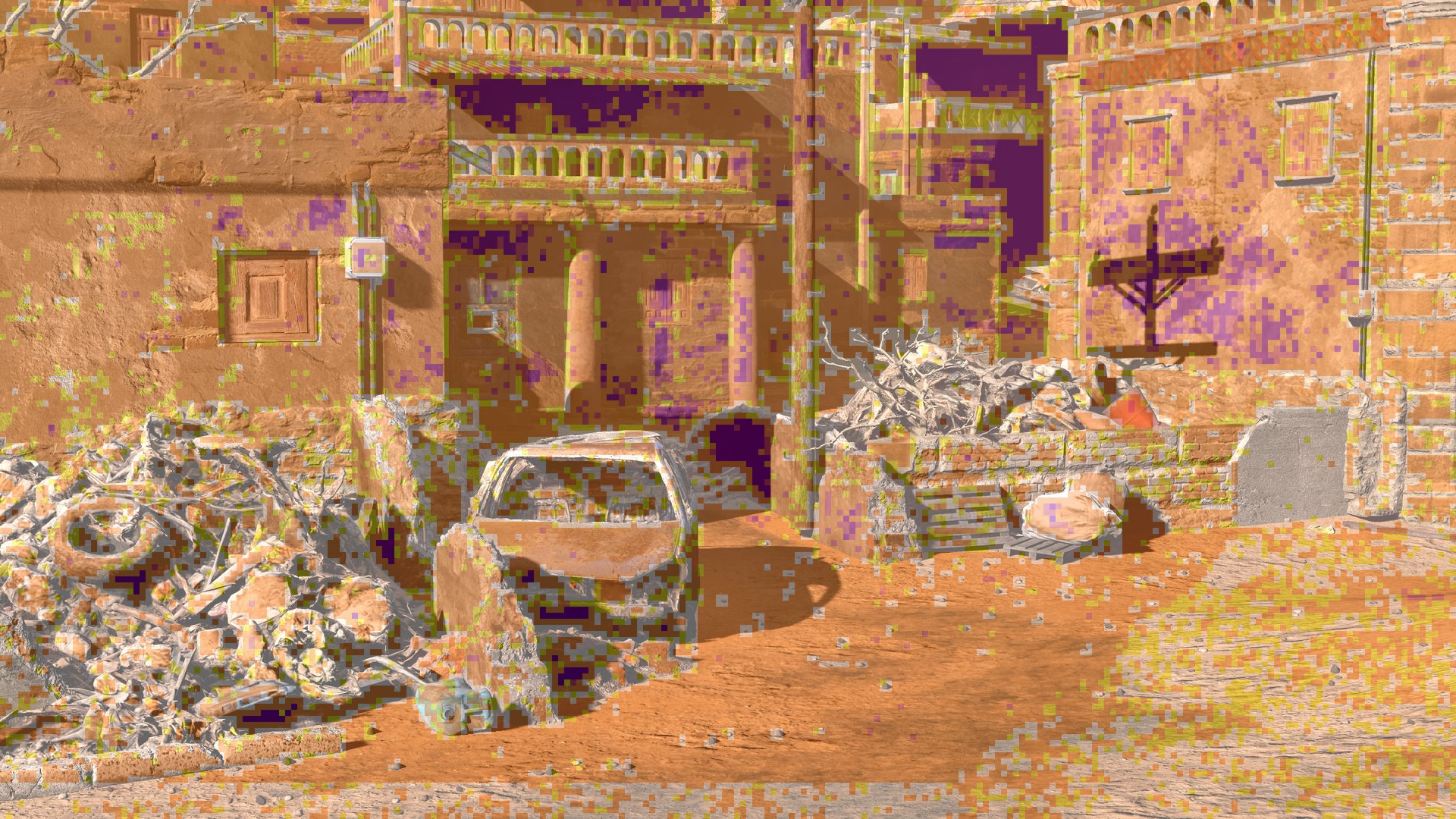New ways to test Variable-Rate Shading with 3DMark
December 5, 2019

Variable-Rate Shading (VRS) is a new DirectX 12 feature that lets game developers improve performance by selectively reducing the level of detail in parts of the frame where it's unlikely to be noticed.
Earlier this year, we released the 3DMark VRS feature test to help you compare differences in performance and image quality when using Tier 1 Variable-Rate Shading.
Today, we're adding a new test that uses Tier 2 Variable-Rate Shading, a more versatile and sophisticated form of VRS.
What is Variable-Rate Shading?
Shading rate refers to the number of pixel shader operations called for each pixel. Higher shading rates improve accuracy but are more demanding for the GPU. Lower shading rates improve performance at the cost of visual fidelity.
With Variable-Rate Shading, a single pixel shader operation can be applied to a block of pixels, for example shading a 4×4 block of pixels with one operation rather than 16 separate operations.
By applying the technique carefully, VRS can deliver a big performance boost with little impact on visual quality. With VRS, games can run at higher frame rates, in a higher resolution, or with higher quality settings.
3DMark VRS feature test adds Tier 2 support
There are two tiers of VRS support. With Tier 1, developers can specify a different shading rate for each draw call. Tier 2 adds more flexibility and control by allowing different shading rates within each draw call.
In our Tier 2 test, lower shading rates are used in areas where there is low contrast between neighboring pixels, for example, areas in shadow or with fewer details.
3DMark VRS feature test screenshots: VRS on VRS off
The VRS feature test also offers an interactive mode that lets you change Variable-Rate Shading settings on the fly to see how they affect the frame rate and image quality. There's even a handy visualizer option, shown below, that shows you where each shading rate is used.
Available now
The VRS feature test is available now as a free update for 3DMark Advanced Edition and 3DMark Professional Edition customers with a valid annual license.
Please note that you need Windows 10 version 1903 or later and a DirectX 12 GPU that supports Variable-Rate Shading to run the 3DMark VRS feature test. Tier 1 VRS is supported by NVIDIA Turing-based GPUs and Intel Ice Lake CPUs. Tier 2 VRS is currently only available on NVIDIA Turing-based GPUs.
Recent news
-
Procyon Labs launches with FLUX.1 AI Image Generation Demo
November 4, 2025
-
3DMark Solar Bay Extreme is available now!
August 20, 2025
-
3DMark Speed Way Teams up with PC Building Simulator 2!
July 17, 2025
-
New Procyon AI Benchmark for Macs now available
June 25, 2025
-
3DMark for macOS available now!
June 12, 2025
-
New Inference Engines now available in Procyon
May 1, 2025
-
Try out NVIDIA DLSS 4 in 3DMark
January 30, 2025
-
Test LLM performance with the Procyon AI Text Generation Benchmark
December 9, 2024
-
New DirectStorage test available in 3DMark
December 4, 2024
-
New Opacity Micromap test now in 3DMark for Android
October 9, 2024
-
NPUs now supported by Procyon AI Image Generation
September 6, 2024
-
Test the latest version of Intel XeSS in 3DMark
September 3, 2024
-
Introducing the Procyon Battery Consumption Benchmark
June 6, 2024
-
3DMark Steel Nomad is out now!
May 21, 2024
-
Procyon AI Inference now available on macOS
April 8, 2024

